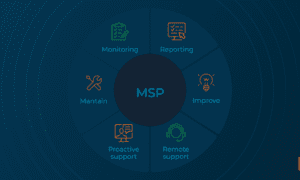When budgets blow up on a build, the culprit is often the first major line item: excavation. On paper it looks simple—bring in machines, dig, haul, done. In practice, excavation services touch permits, soils, safety, utilities, trucking, testing, and compliance. Each of those has cost traps that don’t always make it into the initial bid. This guide breaks down the hidden costs you’re likely to encounter and how to plan for them before the first bucket hits the ground.
Why excavation runs over budget
Even well-scoped projects run into surprises. The most common drivers are:
- Unknown subsurface conditions (soft soils, rock, debris, or groundwater)
- Permit requirements and inspections that add time and coordination
- Utility conflicts discovered only after potholing or trenching begins
- Access constraints that slow production and increase trucking costs
- Erosion control, environmental compliance, and safety measures
- Weather delays and standby time
- Change orders caused by plan tweaks or field conditions
Understanding these categories helps you read bids critically and budget with realistic allowances.
1) Preconstruction due diligence that isn’t “included”
Before mobilization, responsible contractors do homework—often at your expense.
- Geotechnical investigation: A soils report informs excavation depth, shoring needs, and compaction criteria. Without it, bids are guesses, and change orders are inevitable.
- Topographic and boundary survey: Necessary to set grades, volumes, and legal limits of work.
- Utility locates and potholing: 811 markings are a start, not an endpoint. Vacuum potholing verifies depth and alignment and can reveal abandoned lines or private utilities.
- Permits and fees: Right-of-way, grading, haul routes, and street closures all come with costs and lead times.
- Environmental checks: Wetlands, protected trees, cultural resources, and habitat restrictions can trigger monitoring or seasonal constraints.
Tip: If a bid excludes these items, you’ll still pay for them—just later and usually at a premium.
2) Site prep and access—the productivity killers
Production rates depend on access. If iron can’t move, costs climb.
- Clearing and demolition: Removing trees, stumps, old slabs, or underground tanks is often excluded or billed as T&M (time and materials).
- Temporary access roads and mats: Soft ground requires stabilization to carry haul trucks without getting stuck.
- Staging and laydown limitations: Tight urban lots need flaggers, spotters, and smaller equipment—more hours for the same yardage.
- Traffic control: Lane closures, detours, and police details can outpace the price of dirt moving itself.
- Erosion and sediment controls: Silt fence, inlet protection, wattles, and maintenance visits add material and labor you’ll rarely see highlighted in a base bid.
Ask for a site logistics plan that shows haul paths, stockpile areas, and traffic control assumptions.
3) Soil and rock surprises
No factor swings costs more than the ground you actually meet.
- Unsuitable soils: Peat, organics, trash fill, or muck must be undercut and replaced with structural fill. That means more export, more import, and more compaction.
- Rock excavation: Blasting or hammering drastically slows production and can require vibration monitoring and special permits. “Rock if encountered” clauses move that risk to you.
- Expansive clays and high plasticity soils: These may demand lime/cement treatment or over-excavation.
- Groundwater: Dewatering requires pumps, discharge permits, filtration, and additional safety measures.
- Contaminated soils: Even minor contamination changes the entire cost model—special handling, lined trucks, manifests, and disposal at approved facilities.
Mitigation starts with a good geotech report and clearly defined unit prices for rock, unsuitable soils, and dewatering.
4) Haul-off, disposal, and material import (the trucking equation)
Moving dirt isn’t just about machine hours; it’s a logistics problem.
- Dump fees and transport distances: Pricing is sensitive to the nearest legal disposal site. Longer hauls mean fewer trips per day and higher fuel consumption.
- Weight vs. volume billing: Know whether the contract uses tons or cubic yards and how moisture affects conversion.
- Material classification: Clean fill, inert debris, and contaminated soil all have different destinations and rates.
- Import needs: Structural fill, base course, and drainage gravel are commodity materials with volatile pricing and delivery minimums.
Insist on haul route assumptions, round-trip times, and whether fuel surcharges or tipping fees are pass-through costs.
5) Safety, shoring, and compliance (non-negotiables that add up)
Excavation is high-risk work, and compliance costs money—appropriately so.
- Trench safety: Sloping, benching, trench boxes, and engineered shoring systems slow production but are essential.
- Proximity hazards: Work near foundations, roadways, rail, or utilities may require engineered shoring, monitoring, or reduced bucket sizes.
- Stormwater pollution prevention (SWPPP): Plans, inspections, and logs are often required and billable.
- Dewatering discharge permits: Filtration (bags, tanks, or settlement) and testing may be mandatory before water hits the storm system.
- Archaeological or environmental monitoring: Triggered by site history or permit conditions, typically billed hourly.
These aren’t places to cut corners; budget for them up front.
6) Equipment, mobilization, and time-based charges
Look beyond the hourly rate of an excavator.
- Mobilization/demobilization: Lowboy transport, pilot cars, and permits for oversize loads.
- Minimums and shift premiums: Four-hour minimums, overtime rates, night work multipliers, and weekend penalties.
- Standby time: Weather, inspections, or utility delays can put crews on the clock without moving dirt.
- Fuel and maintenance surcharges: Often tied to market indices and applied monthly.
- Prevailing wage or project labor agreements: Affect total labor burden beyond base wages.
Clarify when the clock starts, what counts as standby, and which surcharges are indexed vs. fixed.
7) Testing and documentation you’ll be asked to provide
Quality control protects your project—but it’s rarely free.
- Compaction and density testing: Third-party technicians, nuclear gauge tests, and re-tests if you miss target compaction.
- Proof-rolling and remediation: Failing a proof-roll can trigger undercut and replacement.
- As-builts and re-staking: Survey time to verify subgrade elevations, trench locations, and quantities.
Decide early who pays for testing, who schedules it, and how re-tests are billed.
8) Change orders and scope creep
Even with airtight plans, field realities change.
- Plan clarifications: Elevation tweaks, utility reroutes, or added underdrains ripple through excavation quantities.
- Unknown utilities: Old, unrecorded lines can force redesigns and delay locates.
- Value engineering vs. value shifting: “Cheaper” options may move cost from concrete to earthwork or vice versa.
Protect yourself with clear unit pricing, allowances for known-unknowns, and a written change order process.
How to budget smarter for excavation services
Use these practices to reduce surprises and align your budget with reality:
- Get a current geotechnical report and share it with all bidders. Require them to acknowledge it in pricing.
- Bid with unit prices and alternates: Rock per cubic yard, unsuitable removal per cubic yard, dewatering per day, extra haul distance per mile, import per ton.
- Define disposal classifications in the specs and identify the intended landfill or recycling facility.
- Require a haul plan: Assumed truck counts, cycle times, route, and tipping sites.
- Include potholing and utility coordination as explicit line items.
- Ask for a dewatering plan with discharge method, filtration approach, and permits.
- Budget contingency: 10–20% depending on the risk profile (urban infill and brownfields need more).
- Set testing responsibilities: Who books, who pays, and how re-tests are handled.
- Schedule float and weather criteria: Define rain days, wind limits for cranes, and what triggers standby billing.
- Track quantities in the field: Daily truck counts, load tickets, and drone/topo progress checks to reconcile pay apps.
- Hold a preconstruction meeting to walk through logistics, safety, environmental controls, and inspection cadence.
- Document everything: Photos of subgrade, utility crossings, and compaction tests create a defensible record.
Questions to ask your excavation contractor
- What specific exclusions are in your bid?
- How did you calculate cut/fill volumes, and can I see your takeoff?
- What unit prices apply if we hit rock, unsuitable soils, or groundwater?
- Which landfill or recycling facility are you using, and what are their current tipping fees?
- What’s your plan and rate structure for dewatering (equipment, discharge permits, filtration)?
- How will you maintain erosion controls and who pays for repairs after storms?
- What are your assumptions for traffic control, flaggers, and police details?
- How do you define and bill standby time?
- Who schedules and pays for compaction testing and re-tests?
- What documentation will I receive weekly (tickets, timesheets, inspection reports)?
Red flags to watch for
- Vague scope language like “all necessary excavation services” without quantities or unit prices.
- Very low base bid with multiple “if encountered” clauses that push risk back to you.
- No haul plan or disposal site identified.
- Missing dewatering, erosion control, or traffic control from the proposal.
- Reluctance to share takeoffs or assumptions used to price the job.
Bottom line
Excavation shapes the schedule and the budget for everything that follows. Many overruns aren’t “gotchas”—they’re foreseeable costs that weren’t discussed early enough. By insisting on proper due diligence, clear unit pricing, and documented assumptions, you can compare excavation services apples-to-apples, control risk, and keep your project moving.































